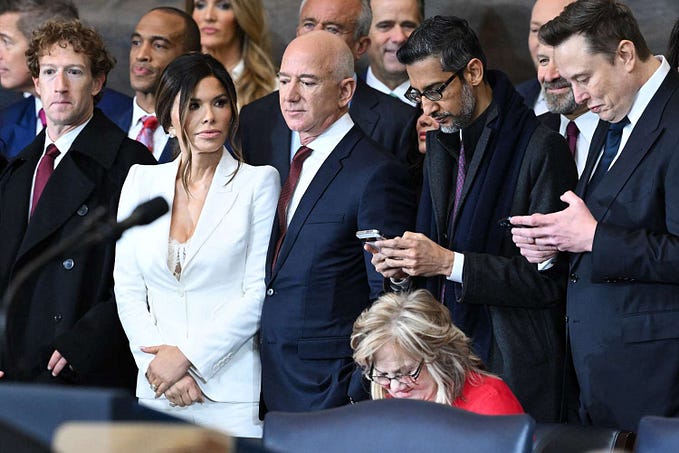The reinforcement of gender stereotypes on social media images
Social platforms like Facebook and Instagram allows users to present themselves on the media. Such platform necessarily influences the presentation of adolescents personal and social identities, driving them to selectively construct social media personalities, Walther (2007). Several researchers have argued that females and males are socially pressured into embellishing personal information of themselves online thus reinforcing false identities of self-misrepresentations. The following article will discuss the conformity of stereotypical gender traits on self-selected social media images.
According to the role theory, users pursue unwritten social rules as they usually behave ‘’in ways that are different and predictable depending on their respective social identities and the situations they find themselves in’’, Biddle (1986, p.68). Gender identities shape how we make sense of ourselves and the social world around us, Goffman (1976). However, Wood (2009, p.20) argues that gender representation is fuelled by cultural values and practices, therefore society’s definition of gender somewhat shapes expectations on how individuals should communicate in terms of gender. Therefore, gender displays are means of communication, defined by society, and expressed by people through interactions and constructions of societal gendered beliefs.
Adolescents are using these platforms to create false representations of themselves by conforming to idealistic, socially constructed versions of the self that portrays how a wo/man is expected to look and behave in society, Back et al (2010). Studies show that adolescents who alter self-presentation on social media usually ‘’lack social skills and self-esteem with higher levels of social anxiety and aggression’’, Harman et al. (2005). Moreover, this issue is fuelled by stereotypical gender-specific expectations in society, where teens are constantly pressured by the media in looking a certain way to avoid social rejection, Brody (1997). Its reasonable to assume that altering identity behaviour is becoming all the more common on social platforms. Females and males are increasingly conforming to stereotypes in social media images, Valkenburg, Peter & Schouten (2005).
These over generalized beliefs drive women into assuming that in revealing more skin, portraying themselves as attractive and affiliative in their online avatars will limit them from being socially rejected especially among their male peers, Haferkamp et al. (2012). In fact, Valkenburg, Peter & Schouten, argue that women are usually sexually expressive on social platforms because they somewhat ‘’perceive sexuality as a means of status in society’’. Moreover, self-misrepresentations on socials, leads to negative self-body images through overly focusing on comparing oneself and replicating unrealistic ideals, Thompson & Lougheed (2012). Women are also conforming to traditional definitions of femininity in qualities such as submissiveness, innocence, and sentimentality. Men’s gender-based generalized beliefs often internalize cultural standards through dominance and sexual virility.
Altered self-presentations might represent exciting possibilities in exploring freedom, in fact, Rettberg (2009), claims that ‘’our fascinations with creating digital self-portraits is indicative of our collective coming of age where we as a culture are discovering that we have voices online and can express ourselves rather than simply accepting the mass media’s views of the world’’. However, the pressing issue of online identity construction subjects’ men and women to different behavioural expectations in society. Offline behaviours are also conforming to gender idealisms where men are expected to be more independent, unemotional, and dominant, whereas women are somewhat expected to be dependent, emotionally expressive and vulnerable, Okdie (2011)
Whilst digital formats may simply explore chances in replicating normative versions of the self that are generally accepted by society, such gender portrayals are yet reinforcing existing gender stereotypes. Moreover, the reinforcements of hegemonic ideals undermine progressions on gender equality, pressuring adolescents into gendered categorizations and conforming to socially defined gender norms. This, as a result also represses gender transgressors as they’re often perceived as a ‘’threat and are punished through social sanctions’’, Schilt & Westbrook (2009) for not conforming to such ‘ideals’.
Nonetheless, media is a power tool in promoting social norms and values, therefore, this can in turn advance the cause of gender equality by evolving gender-neutral portrayals and raising social awareness on equality rather than driving adolescents into questioning their self-worth in a culture dominated by misconceptions.

Author: Ruby Sacco
This blog is a project for a study unit: MCS 3953, University of Malta.
References
Back, M.D., Stopfer, J.M., Vazire, S., Gaddis, S., Schmukle, S.C., Egloff, B., et al. (2010), Facebook profiles reflect actual personality, not self-idealization. Psychological Science, 21 (3) (2010), pp. 372–374.
Brody, L. R. (1997), Gender and emotion: beyond stereotypes. Journal of Social Issues, 52 (2) (1997), pp. 369–396.
Biddle, B. J. (1986). Recent developments in role theory. Annual Review of Sociology, 12, 67–92.
Goffman, E. (1976). Gender advertisements. New York: Harper & Row.
Haferkamp, N., Eimler, S.C., Papadakis, A.M., Kruck, J.V. (2012), Menare from Mars, women are from Venus? Examining gender differences in self-presentation on social networking sites. Cyberpsychology, Behaviour and Social Networking, 15 (2) (2012), pp. 91–98.
Okdie, B.M., Guadagno, R.E., Bernieri, F.J., Geers, A.L., Mclarney Vesotski, A.R. (2001), Getting to know you: face-to-face versus online interactions. Computers in Human Behavior, 27 (1) (2011), pp. 153–159.
Rettberg, J. W. (2009). “Freshly generated for you, and Barack Obama”: How social media represent your life. European Journal of Communication, 24, 451–466.
Thompson, S.H., Lougheed, E., Frazzled by Facebook? an exploratory study of gender differences in social network communication among undergraduate men and women. College Student Journal, 46 (1) (2012), pp. 88–98.
Valkenburg,P. , Schouten, A. , & Peter , J. ( 2005 ). Adolescents’ identity experiments on the Internet. New Media & Society, 7, 383–402.
Walther, J.B., Selective self-presentation in computer-mediated communication: hyperpersonal dimensions of technology, language, and cognition. Computers in Human Behavior, 23 (5) (2007), pp. 2538–2557.
Wood, J. T. (2009). Gendered lives: Communication, gender, and culture (), 8th ed. Belmont, CA: Wadsworth.









